photo_brooks-range_kobuk-river
Do you have any thoughts on this post?
Since childhood, Sam Maher has spent time in wild places among wild creatures. This fascination and immersion in the wild has led her to pursue a doctorate in wildlife biology at the University of California at Berkley. From the American West to Botswana, Maher is interested in how wildlife agencies make measured decisions when it comes to managing land and wildlife.
Here is her story.
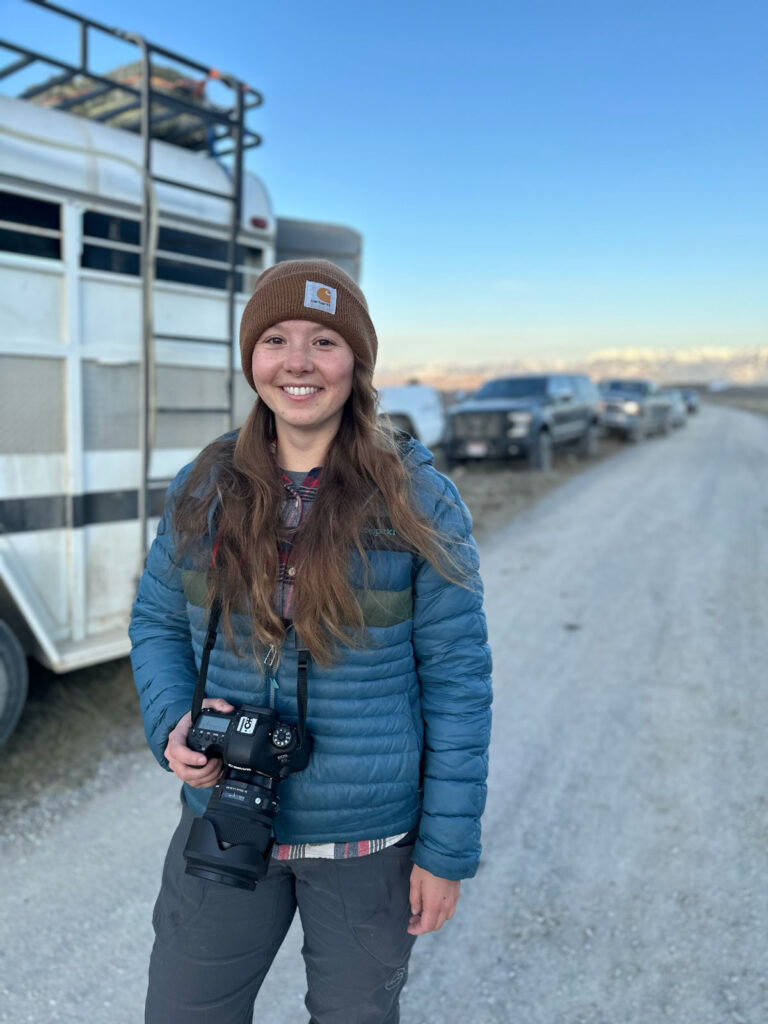
I was raised by two geologists who spent time in the backcountry doing research and mapping projects in Alaska, Svalbard, and the Sierra Nevada. I remember them taking us hiking and camping in the most amazing places as a kid, and I would just complain about having to walk uphill. Looking back, I am grateful for the time they spent with me outside because it’s made me more comfortable in the field and attentive to the land around me.
I’ve never been much of a hunter or angler because those weren’t activities that were passed down in my family, and there’s a pretty steep learning curve there. But more recently, I’ve gotten to know a lot of sportsmen and women and have grown to admire the amount of skill and knowledge involved in these pursuits. Sometimes I feel like hiking and sightseeing is a passive way of moving through a landscape, but when you hunt, fish, and track, you engage with your surroundings in a such a meaningful way. Photography for me has filled that role for me in some ways.
Participate in the Greater Yellowstone Ecosystem Shed Study HERE!
I spent a field season in rural Botswana doing some vegetation monitoring, and at the end of the project my advisors took us to Moremi Game Reserve in the Okavango Delta. I was fast asleep on our first night there when I was awoken by the commotion around my tent and a high-pitched yapping sound. I was curious about what was going on, but we had been instructed not to leave during the night, so I eventually fell back asleep. In the morning, I emerged from my tent to see blood dripping from the tree above our kitchen site. It turns out that a leopard had killed an impala outside our tent, only to be accosted by a pack of hyenas, then dragged its kill into the tree above us. It was incredible to think I had been just a few yards away from all of this, snug in my sleeping bag!
I have a running list of places that I’m just sort of fascinated by and where I’d want to spend time exploring and taking photos. Alaska is one of three states I’ve yet to visit, so that one is up there. I watched an episode of River Monsters where the Jeremy Wade fishes in Mongolia, which looks incredible. I really like the idea taking an extended pack trip out there with those hardy little Mongolian horses and hunting with golden eagles. I think what appeals to me the most is the continuity in the way communities in these extreme, isolated environments make their living and are still participating in a way of being that’s been practiced for hundreds, or even a thousand years. On the other hand, I struggle with the idea that my participation in those practices as a tourist is what would destroy that authenticity.
“Conservation doesn’t enhance my outdoor life so much as it IS my outdoor life.”
Conservation is about making decisions on how to steward land and wildlife in such a way that the public can benefit. This seems simple but it’s really this massive objective setting endeavor where we make collective decisions about who the public is, which groups of the public we should prioritize, and which uses for the land are most important. That is extremely challenging when those objectives are at odds with another. I’d probably say that on a personal level, conservation is about cultivating a relationship between myself and the land and its creatures and being a good steward. Conservation doesn’t enhance my outdoor life so much as it IS my outdoor life.
An example of the complexities of conservation: elk in my study area in the Greater Yellowstone Ecosystem use private and working lands as habitat for much of the winter but spend summers on public land. So, do we manage for high elk populations on working lands because they can be hunted and viewed by the public, or do we need to control populations to reduce costs for producers who deal with disease risk and competition with cattle for forage? How do you even do this if there is limited private lands hunting access? I imagine a lot of people reading this have a strong opinion on that, and being involved in decision-making is the only way we can get closer to managing wildlands so that everyone’s needs are met.
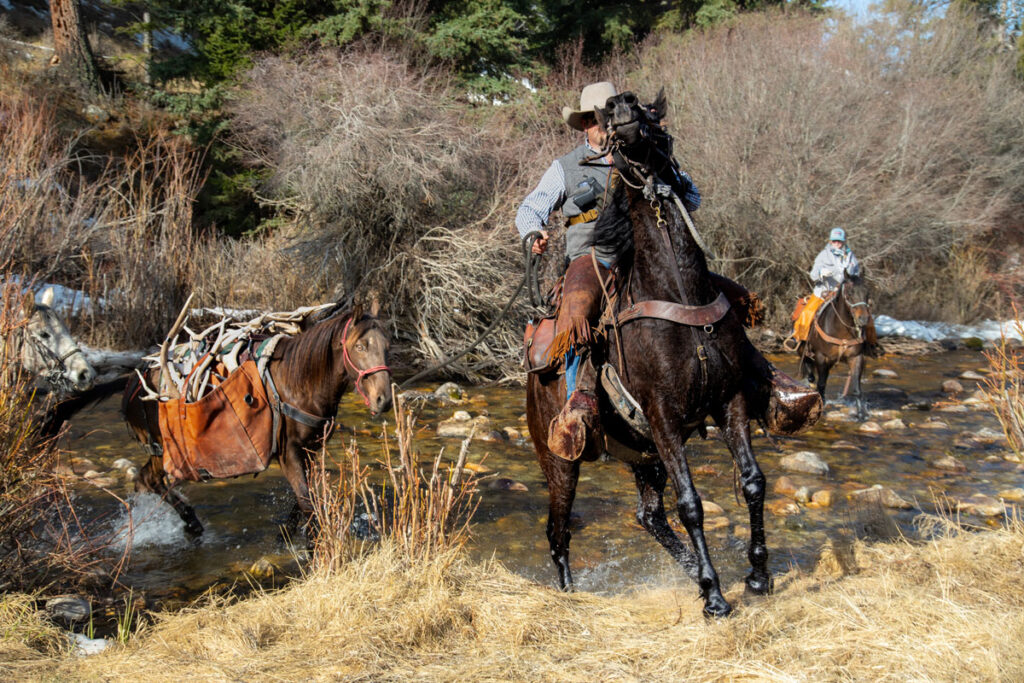
I’m doing my Ph.D. in the Bay Area, where fire, drought, and development are three of the four horsemen of the apocalypse. I would say the fourth is a more existential question about identity and how we relate to nature as people, as well as how we relate to other people about nature. Specifically, I’m thinking about the rural-urban divide, and how a lot of urban people are in love with an idea of nature as this gentle, pristine thing that maybe doesn’t really exist. There’s a great study led by Robert Bonnie, now the Under Secretary for Farm Production and Conservation at USDA, that shows how conservation is this one last bipartisan issue, that urban and rural people and conservatives and liberals care about the environment equally, but that they disagree on the government’s role in stewarding it. I think recognizing that conservation is a shared priority would take us a long way.

We live in this thrilling and terrifying time in history where everything around us is changing at breakneck speed and there’s so much uncertainty about what life is going to look like in just a decade. Being involved in conservation and connected to the natural world feels grounding and comforting, like no matter what craziness is going on around me with AI and social media, I still have somewhere to go that is peaceful, that exists outside of the rat race.
All photos courtesy of Sam Maher.

The TRCP is your no-B.S. resource for all things conservation. In our weekly Roosevelt Report, you’ll receive the latest news on emerging habitat threats, legislation and proposals on the move, public land access solutions we’re spearheading, and opportunities for hunters and anglers to take action. Sign up now.
Northeast Pennsylvania’s Cherry Valley National Wildlife Refuge is a special place. Stretching from Wind Gap to the Delaware Water Gap and encompassing a wide variety of topography and wildlife, Cherry Valley is flanked by the Kittatinny Ridge, part of a 185-mile intact and forested wildlife superhighway and renowned bird migration flyway that attracts more than 20,000 hawks, eagles, and falcons each year. This vast and mostly rural landscape also boasts fens and bogs, forests and meadows, farms and fields, and a native brook trout stream that flows through Cherry Valley before it empties into the Delaware River.
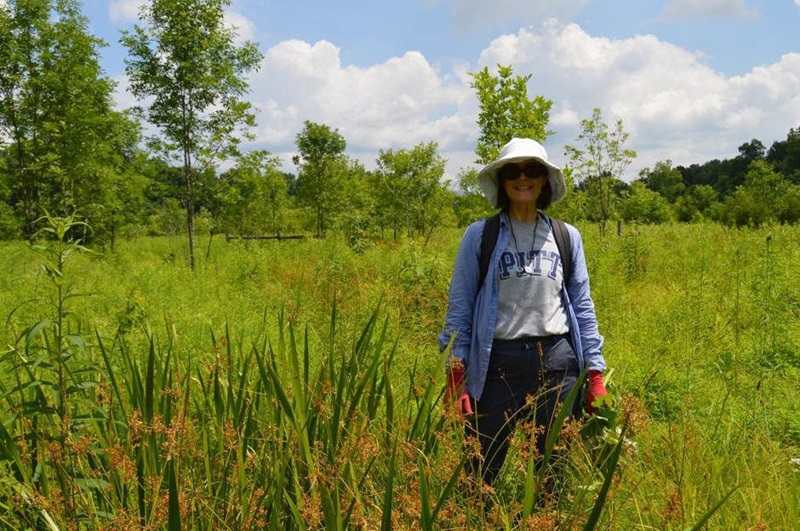
The Nature Conservancy began acquiring and protecting land in Cherry Valley in the late 1990s. In 2000, TNC began seeking opportunities to work at larger scales within Cherry Valley. This led to exploring, together with the U.S. Fish and Wildlife Service and the Monroe County Conservation District, the viability of creating a National Wildlife Refuge.
With local and regional interest high, TNC and the partners joined forces with a then newly formed grassroots group—Friends of Cherry Valley—to mobilize a coalition of businesses, local governments, and civic groups around lobbying Congress to authorize a National Wildlife Refuge. In a bipartisan vote, Congress overwhelmingly approved the 22,000-acre Cherry Valley National Wildlife Refuge Act in 2008.

Today, the refuge boasts a mosaic of streams, wetlands, fields and forests that support vulnerable, threatened or endangered species including bog turtle and American eel along with common species such as black bears, bobcats, and beavers. TNC has focused on reducing erosion and remediating degraded areas of the stream. We also recently facilitated a practitioner training session about returning large woody debris back into streams in order to provide natural shelter, habitat, and temperature regulation for riverine species, including native brook trout.
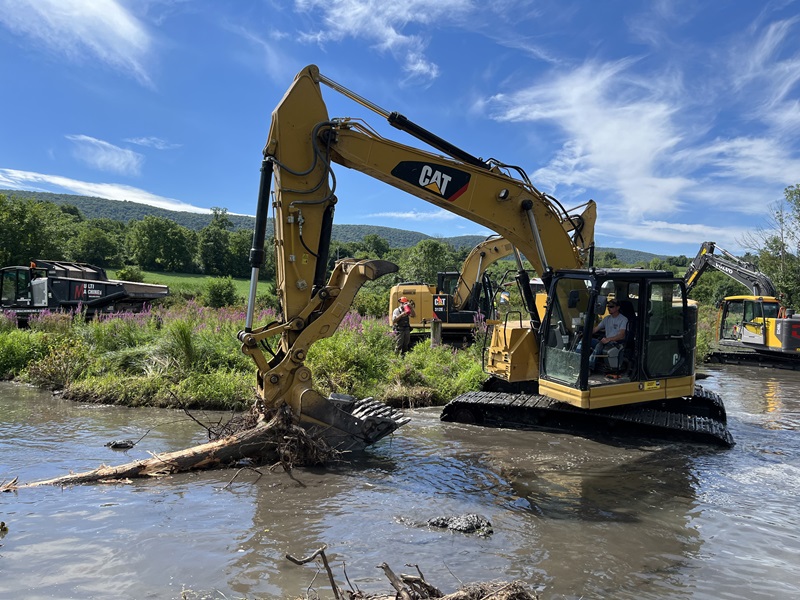
In recent years, the Cherry Valley Refuge has continued to acquire additional acreage to conserve habitat and protect water quality. More than 2,600 acres acquired through the Conservation Fund were recently conveyed to the refuge with funding from Pennsylvania’s Keystone Recreation, Park and Conservation Fund (or Keystone Fund) and other sources. And in late 2023, TNC acquired 78 more acres and transferred them to the USFWS to add to the refuge. The purchase was facilitated with funding from the Pennsylvania Department of Conservation and Natural Resources and the Open Space Institute. The project was supported by OSI’s Delaware River Watershed Protection Fund, which seeks to protect water quality in the Delaware River Basin.
Cherry Valley is a testament to the power of collaboration. Simply put, much of the work here would not be possible without conservation funding from agencies and state funding through programs like the Keystone Fund, or without tireless commitment from our partners like the USFWS; Monroe and Northampton Counties; the Commonwealth of Pennsylvania; the Conservation Fund; the Pocono Heritage Land Trust; the Friends of Cherry Valley; and many others!

Cherry Valley is a stellar example of creating an environment where people and nature can flourish. Together, TNC and its partners will continue to implement creative strategies and habitat restoration projects that aim to safeguard wildlife and support local livelihoods throughout the region for years to come.
Su Fanok is the director of freshwater conservation for The Nature Conservancy, a TRCP partner, in Pennsylvania and Delaware. She leads a team of freshwater practitioners working in the waters of both states to ensure the health, sustainability, and resilience of freshwater ecosystems.
Click here to tell Pennsylvania lawmakers to keep funding conservation efforts in the state.
TRCP’s Colorado staff recaps some of this year’s conservation highlights from the Centennial State
As we near the midway point of 2024, TRCP’s Colorado staff takes a look back on this year’s conservation accomplishments and future opportunities.
2024 in Colorful Colorado
The TRCP, alongside other great partner organizations, submitted comments to the Bureau of Land Management regarding big game habitat conservation and energy development in Colorado in response to the BLM’s draft Big Game Corridors Resource Management Plan Amendment, and the BLM’s draft Solar Programmatic Environmental Impact Statement in February and April respectively. THANK YOU to those who submitted comments through TRCP’s comment portal and calls to action related to those two very important, ongoing planning efforts.
Additionally, we provided the Forest Service with feedback on their final Grand Mesa, Uncompahgre, and Gunnison National Forests Plan revision in February. We advocated for important big game management policies within highest priority habitats and Wildlife Management Areas, and for closer management and conservation of the GMUG’s bighorn sheep herds. Bighorn sheep have since been added to the Forest’s list of Species of Conservation Concern.
The Colorado state legislative session ended last week and a few highlights for hunters and anglers include:
Senate Bill 2024 – 026, Agriculture & Natural Resources Public Engagement Requirement was signed into law on May 1 and requires Colorado Parks and Wildlife, Colorado Department of Agriculture, and Colorado Water Conservation Board commissioners to participate in two public meetings per year, specifically to facilitate discussion with the constituencies for which they were appointed to represent. For example, Parks and Wildlife commissioners appointed to represent sportspersons will make themselves available for public discussions, questions, and feedback twice per year outside of normal Commission meetings. Please take advantage of these opportunities to build relationships with those who represent your interests in important policy decisions! Thank you, Senators Roberts and Will, and Representatives McLachlan and Catlin for sponsoring this legislation.
Senate Bill 2024 – 212, Local Govs Renewable Energy Projects passed the legislature and awaits the Governor’s signature. This renewable energy and transmission development study bill will require the Colorado Energy Office to submit a report to the general assembly by September 30, 2025, that evaluates counties’ regulatory processes for permitting renewable energy and transmission projects and the impacts these projects have on wildlife resources. It also requires that the Colorado Energy Office provides the public with the opportunity to review and comment on the report before it’s finalized. We will continue to partner with other stakeholders, track this process closely, and advocate for wildlife habitat avoidance as well as minimization and mitigation of adverse impacts from energy development. It’s important for Colorado to utilize diverse energy resources without sacrificing wildlife populations, migration habitats, or the hunting, angling, and conservation values that TRCP members love so much. Thank you, Senators Hansen and Fenberg, and Representatives Brown and McCormick for sponsoring the bill.
Senate Bill 2024 – 171, Restoration of Wolverines passed the legislature and awaits the Governor’s signature. This bill authorizes reintroduction of historically native wolverines following thorough analysis, public process, and coordination between the US Fish and Wildlife Service and Colorado Parks and Wildlife. Colorado law requires the legislature to first approve any efforts by CPW to reintroduce species. We support this science-based, measured approach to species reintroduction. Thank you, Senators Will and Roberts, and Representatives McLauchlan and Mauro for sponsoring the bill and incorporating lessons learned from past restoration efforts.
House Bill 2024 – 1379, Regulate Dredge & Fill Activities in State Waters passed the legislature and awaits the Governor’s signature. The bill directs the Colorado Department of Public Health and Environment to establish a state-level wetland and stream permit program that safeguards these important habitats for fish and wildlife. The legislation was introduced to address a gap in regulatory protections for wetlands and streams following the U.S. Supreme Court’s decision in Sackett v. EPA which drastically reduced federal protections for most wetlands and many streams under the Clean Water Act. Colorado is among the first states to pass legislation creating state-level safeguards. Thank you, Senators Roberts and Kirkmeyer, and Representatives McCluskie and McCormick for sponsoring this important conservation legislation.
Science-based wildlife management by our state’s wildlife experts is critical to maintaining ecosystem balance and quality opportunities for hunting, angling, and outdoors pursuits for generations to come.
In the second half of 2024 we are looking forward to:
Thank you for staying up to date on Colorado-based issues that impact hunters, anglers, fish, wildlife, and wildlife-based businesses across the state. I hope you’ll take action on important issues with us again as we move forward.
The TRCP is your no-B.S. resource for all things conservation. In our weekly Roosevelt Report, you’ll receive the latest news on emerging habitat threats, legislation and proposals on the move, public land access solutions we’re spearheading, and opportunities for hunters and anglers to take action. Sign up now.
Photo Credit: Christian Collins
May is American Wetlands Month – a time to celebrate the vital role wetlands play in sustaining fish and wildlife and our hunting and fishing heritage. Wetlands are not just habitats for a wide range of fish and game species, ranging from cutthroat trout to white-tail deer, but they also provide a host of other benefits, including enhancing water quality and storing carbon, which are crucial for our environment’s health. Altogether, the conservation and restoration of wetlands plays a critical role in sustaining fish and wildlife habitat, and in-turn, hunting and fishing opportunities for future generations.
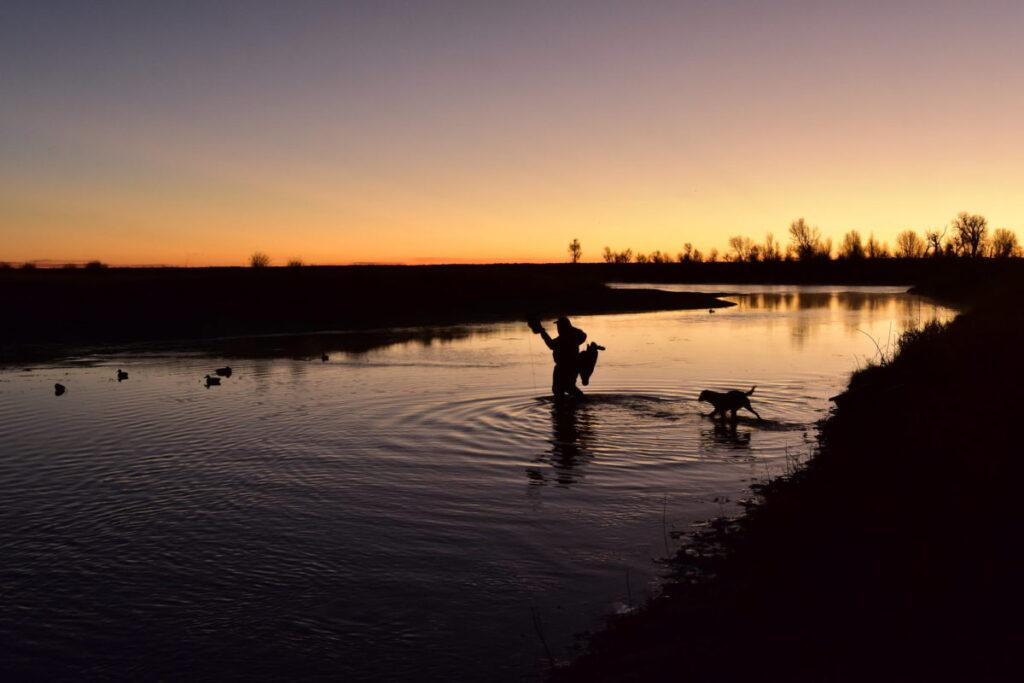
However, while the benefits of healthy wetlands may be clear to hunters and anglers, America’s wetlands are arguably more at risk than ever. The U.S. Fish and Wildlife Service recently released their national 2009-2019 Wetlands Status and Trends report, the sixth in a series of congressionally mandated reports evaluating current wetland health. The report found that net wetland loss increased over the past decade, with vegetated wetlands, like marshes and swamps, being disproportionately impacted. These wetlands are disappearing so quickly that 670,000 acres were lost between 2009 and 2019, an area about equal to the state of Rhode Island. On top of the report, we’re also quickly approaching the one-year anniversary of the U.S. Supreme Court’s decision in Sackett v. EPA, which dealt a significant blow to Clean Water Act protections for wetlands and smaller streams.
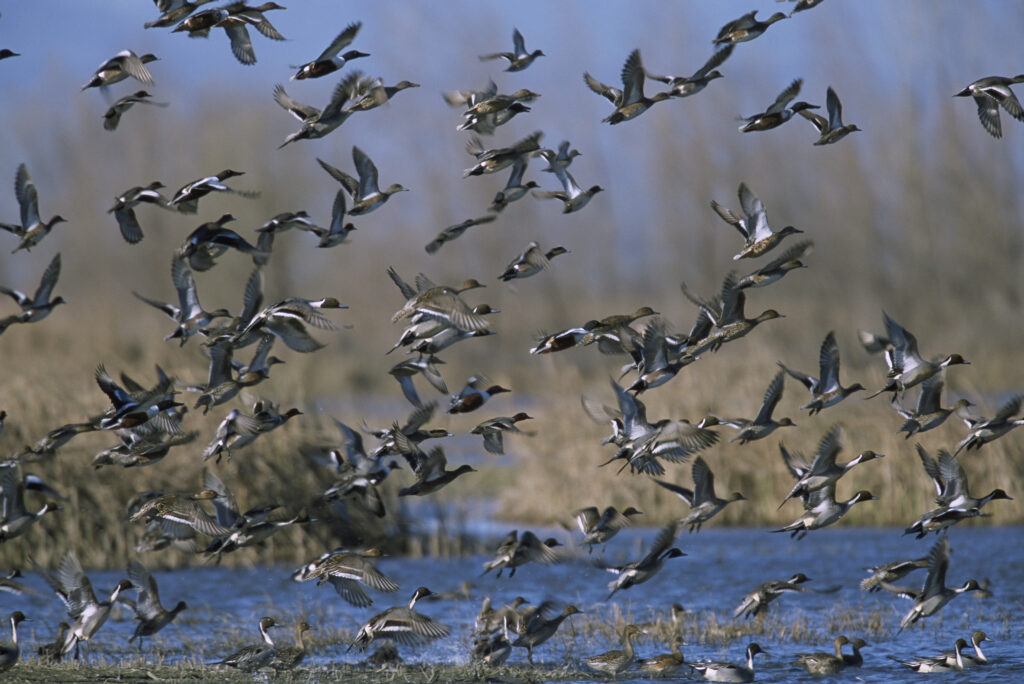
Fortunately, the TRCP and our partners are working together to build support for federal and state policies designed to mitigate the impacts of the Sackett decision and reverse our nation’s decline in wetland habitat and the mounting risk to fish and wildlife, and our hunting and angling traditions. At the federal level, the TRCP, along with Ducks Unlimited and Trout Unlimited, joined the recent America the Beautiful Freshwater Challenge as inaugural members. The new initiative sets new national goals to reconnect, restore, and protect the nation’s wetlands, rivers, and streams and challenges participants to work collaboratively to sustain these important natural resources. The TRCP is also working with the National Association of Wetland Managers and the National Wildlife Federation to build Congressional support for strengthening the Environmental Protection Agency’s Wetland Program Development Grant Program, which provides funding to states and Tribes to develop wetland protection programs and strategies, which is critical at this moment in time. We’re also working to expand the program’s focus to include implementing these wetland protection efforts, which have been identified as a significant need by the state and Tribal wetland community.

At the state level, the TRCP is working with a coalition of groups to pass bipartisan legislation in Colorado that would create a new wetland program to ensure the protection of important wetlands and streams no longer covered by the Clean Water Act. On May 6th, the Colorado General Assembly passed this bipartisan legislation with overwhelming support from the regulated and conservation communities. The bill now heads to Governor Polis’ desk for his signature. The bill, among other things, provides more certainty at the state level regarding protections and permitting for wetlands as the debate of the Clean Water Act’s scope will likely continue. Colorado is now one of the first states in the country to pass legislation to restore protections for wetlands and streams. It can hopefully serve as a model for other states considering similar legislative efforts.
Overall, despite the challenges facing America’s wetlands, hunters and anglers can play a pivotal role in the conservation of these critical resources. As the TRCP and partners continue to work to address these challenges it will be important for hunters and anglers to share their stories with members of Congress, state legislatures, and federal and state agencies on the important roles wetland play in sustaining fish and wildlife and opportunities for hunting and fishing.
Top photo by USFWS/Katrina Mueller
Learn more about TRCP’s commitment to healthy habitat and clean water here.
The TRCP is your resource for all things conservation. In our weekly Roosevelt Report, you’ll receive the latest news on emerging habitat threats, legislation and proposals on the move, public land access solutions we’re spearheading, and opportunities for hunters and anglers to take action. Sign up now.
Theodore Roosevelt’s experiences hunting and fishing certainly fueled his passion for conservation, but it seems that a passion for coffee may have powered his mornings. In fact, Roosevelt’s son once said that his father’s coffee cup was “more in the nature of a bathtub.” TRCP has partnered with Afuera Coffee Co. to bring together his two loves: a strong morning brew and a dedication to conservation. With your purchase, you’ll not only enjoy waking up to the rich aroma of this bolder roast—you’ll be supporting the important work of preserving hunting and fishing opportunities for all.
$4 from each bag is donated to the TRCP, to help continue their efforts of safeguarding critical habitats, productive hunting grounds, and favorite fishing holes for future generations.
Learn More
